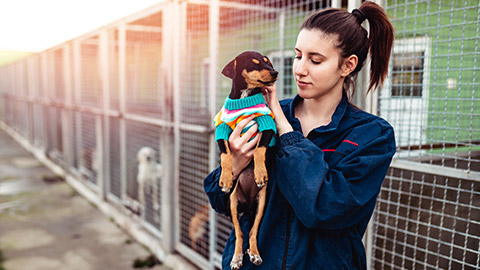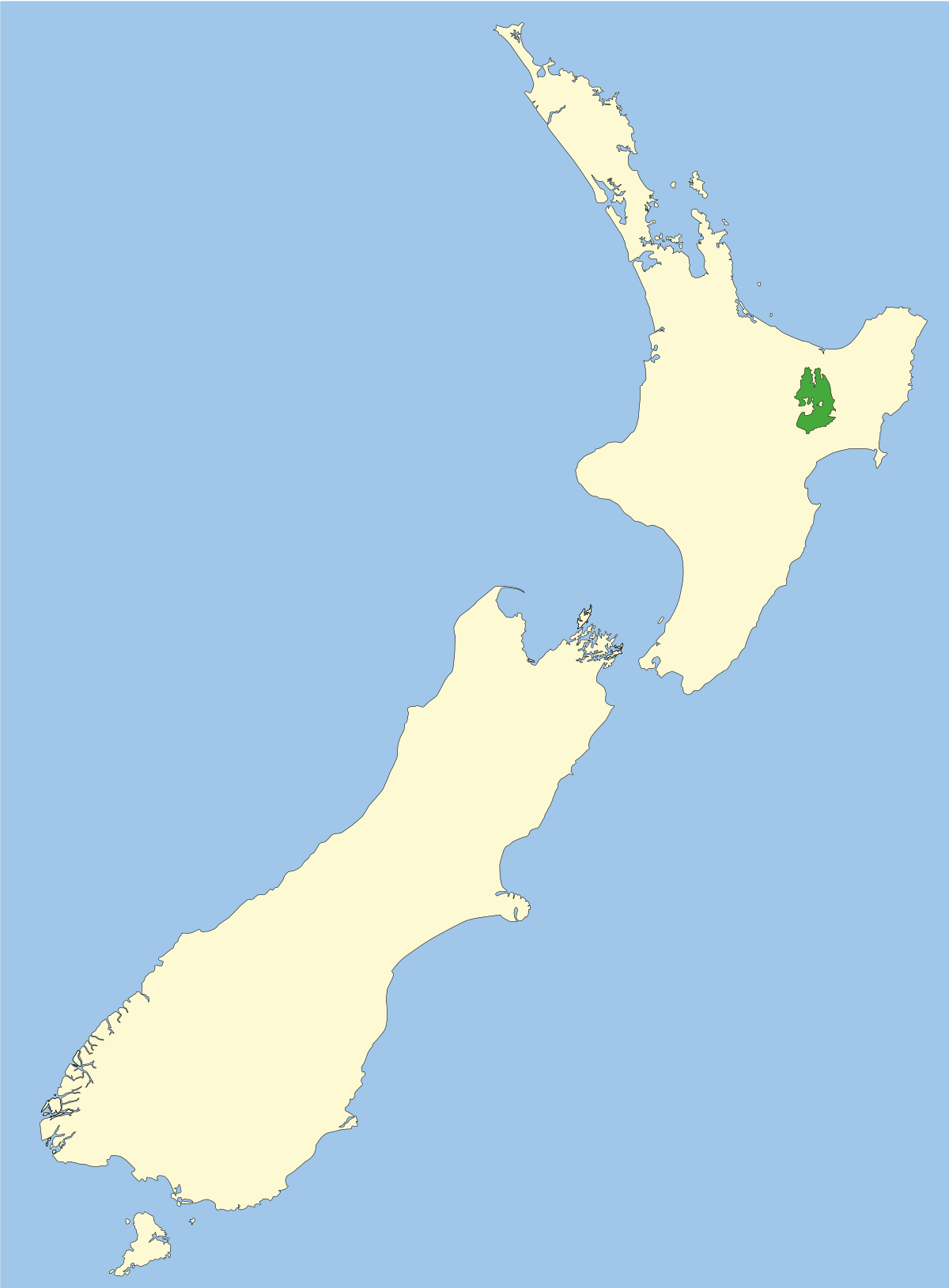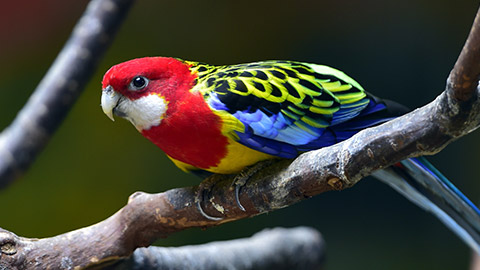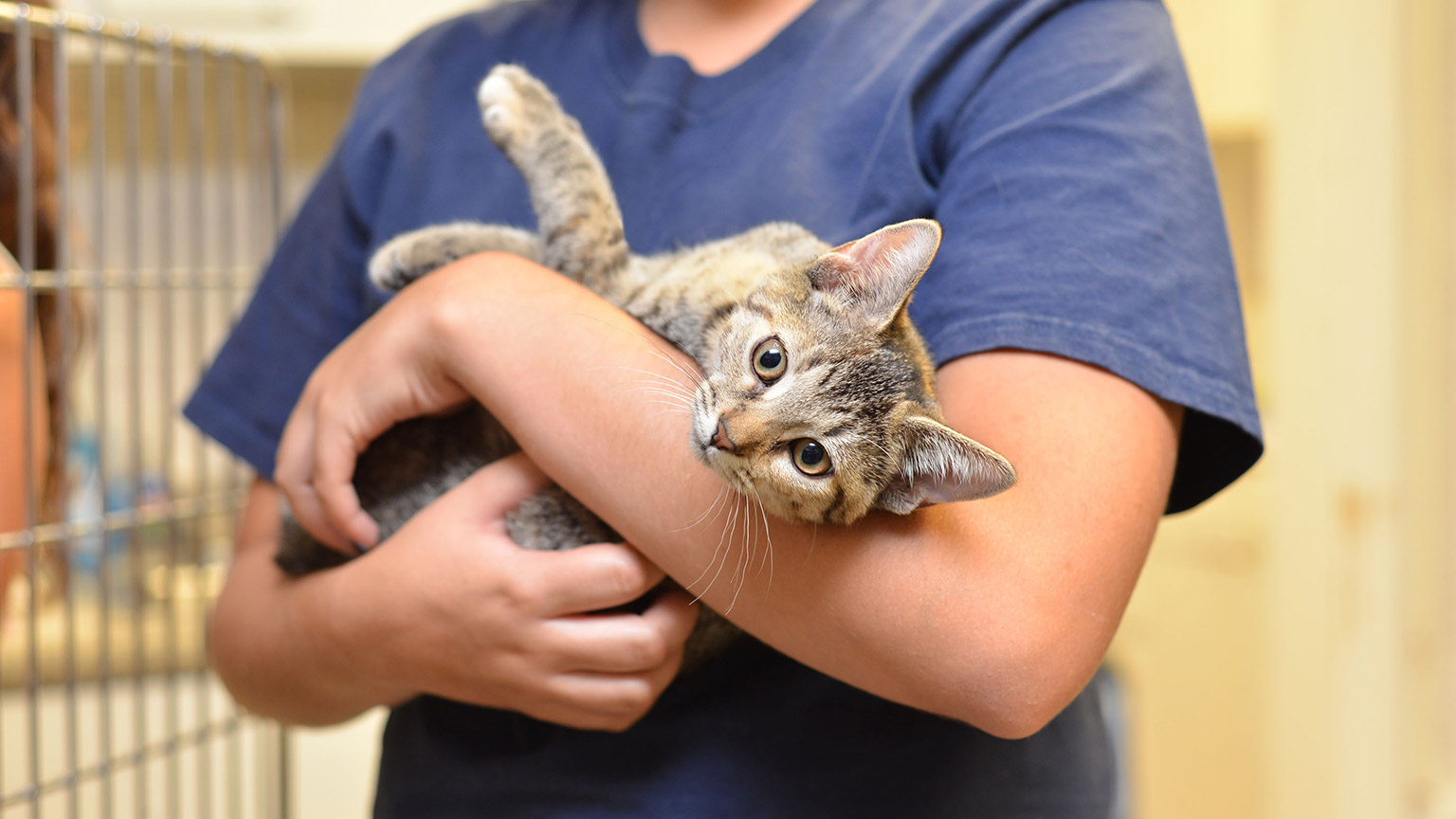[Synthesia Placeholder]
Kia ora animal lovers and welcome to Module Two - NZ Legislation Relating to Animal Care. In this course we’re going to take you through a basic introduction to the regulatory requirements, relevant industry codes of practices, health and safety and sustainable practices in relation to animal care in New Zealand. Let’s dive right in! Me ruku ki te kaupapa!
This course is all about the Acts, Codes and Regulations protecting animals, people and the future of the planet in the animal care space in New Zealand.
This course won’t make you a lawyer, but it will ensure you have an awareness of the laws that apply to working in an animal care context. Despite the depressing stories of animal neglect and abuse that we often see in the media, you will be pleased to know that Aotearoa New Zealand has some great laws for protecting animals with some surprisingly strong penalties.
The types of laws that you will be looking into in this module ensure:
- The rights of companion animals and the responsibilities of companion animal owners are clearly defined.
- That workplaces are safe, and that employers and employees understand their responsibilities towards each other.
- That employers and employees understand what actions are required to make sure workplaces are sustainable.
| Credits | 10 |
| Learning Hours | 100 |
| Learning Outcome | LO2.1 Explain regulatory requirements and relevant codes of practice for animal care and welfare in New Zealand LO2.2 Comply with the regulatory requirements and industry codes of practices relevant to an animal care and welfare setting |
| Assessment | ANML02A1 |
You are free to plan your studies in the way that works best for you, but we know that guidance on how to do this is also helpful. We suggest the following way to navigate through the learning content over the next few weeks:
| Weeks 7-8 | Topics:
|
| Weeks 9-10 | Topics:
|
| Weeks 11 | Topics:
|
Module 2 Assessment Information
There is one assessment for this module. It is due at the end of the module. It will be completed online. More information about the assessment can be found at the end of the module, and also on the assessment page in the navigation panel on the left.
Work Placement Check-in
Please read the information about keeping track of your work placement hours. This is important even if you have not started your placement yet. Read about this in the WPE 01 Check-in, which you can find in the navigation panel on the left.
Sentience
Reflection
‘Sentient’ is a key concept for this module. Do you know what the word ‘sentient’ means? If you have a companion animal or already work with animals do you believe that they have thoughts, feelings, individual personalities, perceptions, and experiences that matter to them?
Before we jump into the legislation around animals as determined by the New Zealand government, let’s take a moment to consider how Māori regard animals as expressed through Kaupapa Māori.
Te Aka, an online Māori dictionary defines Kaupapa Māori the following ways “Māori approach, Māori topic, Māori customary practice, Māori institution, Māori agenda, Māori principles, Māori ideology - a philosophical doctrine, incorporating the knowledge, skills, attitudes and values of Māori society.”
In the Māori worldview, animal sentience is understood through an interconnected relationship between all living things, where animals, humans, and the natural world are deeply linked. This perspective is rooted in the concept of whakapapa (genealogy), which views all beings as part of a vast family descending from a common ancestry. According to Māori tradition, animals, plants, humans, and natural elements share connections through atua (spiritual guardians) and are all considered to have their own intrinsic mauri (life force or essence).
Animals, in this view, possess wairua (spiritual essence), which implies that they experience feelings, exhibit intelligence, and have their own roles within the natural order. This sentience and interconnectedness mean that animals deserve respect, understanding, and protection, as they are not separate from humans but are part of the same extended community. This is reflected in practices of kaitiakitanga (guardianship), where Māori people feel a responsibility to care for and protect animals and the environment.
Modern Māori perspectives often emphasize animal welfare, advocating for humane and sustainable practices that reflect this respect for animals’ sentience and their place in the world. This holistic view sees animals not as resources for human exploitation but as beings with their own agency, deserving of care, balance, and ethical consideration.
In comparison, Western views on animal sentience have varied over the past 2,000 years, shaped by philosophical, religious, and scientific shifts.
Early Western thought largely denied animals any form of sentience or moral standing. The Enlightenment period marked a shift in thinking, with some philosophers suggesting that animals, capable of feeling, should be considered morally in society. Charles Darwin went further by suggesting that humans and animals shared evolutionary origins. Darwin’s theory highlighted the similarity between human and animal experiences, suggesting animals were sentient beings with emotions and even social bonds.
Today, the scientific and ethical recognition of animal sentience is widely accepted, supported by behavioral studies that demonstrate complex emotions, problem-solving abilities, and social interactions in various species. Ethical frameworks, such as animal rights and welfare movements, advocate for policies recognizing animals’ capacity to experience pain and pleasure, aiming to protect their welfare.
Haere tonu, let’s continue now with what New Zealand law says.

The Act is a clear statement to New Zealanders – and to the rest of the world – that animals are sentient and that in New Zealand they have a right to proper and sufficient care.Animal Welfare Act • SPCA New Zealand
Legal Terminology
In the Module 2 introduction you will have noticed words such as ‘Act’ and ‘Legislation’. We see and hear these words nearly every day in the media, but what do they actually mean? Test your knowledge in the drag-and-drop activity below. All you need to do is use your mouse to move each explanation next to the word or phrase that they match.
If you come across any other legal terms that you are not sure of, you can check this glossary provided by the Ministry of Justice: Glossary | New Zealand Ministry of Justice
The following infographic shows the hierarchy of the legal terms, with Acts of Parliament being at the top.
Content of Animal Welfare Act 1999
This is the most important Act to understand for people in Aotearoa New Zealand, working in the Animal Care industry. We mentioned it in Module 1 and learned about how ‘sentience’ became an important addition to the Act in the mahi tahi that Bob Kerridge was involved in. You may even have made notes on the Act as part of your self-directed Learning from Module 1 as well.
So, what’s actually in the Act? Let’s take a look.
| Purpose: | To make clear how people should treat and behave towards animals in caring for them. |
| Enforced/administered by: |
|
| Key Points: |
|
As stated above, the SPCA, MPI and NZ Police share the responsibility for enforcing the Animal Welfare Act. Here’s a story from Stuff.co.nz that shows what that looks like for an SPCA Inspector.
Reading - Pānui
On the frontline with the SPCA inspectors (5 – 10 mins)
Jason Blair is one of the five full-time animal inspectors who cover Hamilton and Tauranga and the greater Waikato/Coromandel region who are helping the SPCA prosecute neglectful animal owners.
Questions
Pre Read Question: What do you think will be the main focus of the SPCA inspectors’ interactions with the public: prosecuting or educating?
URL: On the frontline with the SPCA inspectors | Stuff.co.nz
Post Read Task: Answer the following questions based on the information in the article.
The Act covers a wide range of contexts, many of which are not applicable to Companion Animals, and, therefore not necessary to know as part of this course. A key part of the Act that we do need to know is the definition of ‘an animal’s physical, health and behavioural needs’. The Act states:
In this Act, unless the context otherwise requires, the term physical, health, and behavioural needs, in relation to an animal, includes— proper and sufficient food:
- proper and sufficient water:
- adequate shelter:
- opportunity to display normal patterns of behaviour:
- physical handling in a manner which minimises the likelihood of unreasonable or unnecessary pain or distress:
- protection from, and rapid diagnosis of, any significant injury or disease— being a need which, in each case, is appropriate to the species, environment, and circumstances of the animal.
Source: https://www.legislation.govt.nz/act/public/1999/0142/latest/DLM50286.html
Companion Animal Owners’ Responsibilities
To summarise the Animal Welfare Act 1999, if you own or are responsible for a companion animal then you need to make sure that you take care of an animal’s physical, health and behavioural needs. This includes work and volunteer roles. The maximum penalties under the Act are severe: you can be jailed for up to 12 months or fined up to $50,000, or both.
We’ll take a specific look at the rules around cats and dogs later on in this module, once we have talked a little about the Regulations that apply to the Animal Welfare Act 1999. In the meantime, let’s consider one part of the definition of an animal’s physical, health and behavioural needs more closely: what is meant by normal patterns of behaviour? Emily and Ngaire discuss this in the case study below.
Case Study
Normal Patterns of Behaviour?

Emily is with her training buddy, Ngaire. They are watching other SPCA staff members working in the dog training area. Ngaire explains that when dogs are surrendered or rescued, each dog is assessed by SPCA staff to check what training or rehabilitation is needed to successfully rehome them. “Dogs are given additional training to prepare them for their new life,” Ngaire says. “Each one receives a temperament check and lots of chances to experience different forms of enrichment. It gives the trainers a really good opportunity to understand each dog’s needs, as some of the animals we see here have not had much chance to experience normal patterns of dog behaviour.”
Emily asks, “What do you mean by that?”
“Well”, says Ngaire, “Normally, dogs would need lots of exercise and often, the bigger the dog, the more exercise it needs. However, many owners underestimate how much energy and strength a big dog has and how much training is required to exercise safely with it, especially in a city space. Sometimes, this becomes a problem that owners avoid by not giving their dogs daily exercise. It can lead to health and behavioural problems, which often end up with the dog being surrendered to us.”
“What kind of problems?”, asks Emily.
“Barking or crying, digging, chewing, accidental biting or extremely energetic play, weight gain, and constantly trying to get the attention of their owners. Other dogs might show behaviour that looks similar to depression in humans”, Ngaire replied.
“So not giving the dog regular exercise is not meeting the requirements of the Animal Welfare Act, because they are not getting the chance to experience a normal pattern of behaviour?”
Yes, that’s exactly right, Emily,” said Ngaire.
Normal dog behaviour is easily understood because they are a common companion animal and there is a lot of information available for people to access and understand to help them be responsible dog owners. But how about other companion animals, such as cats, rabbits, birds, rats or mice?
Hei Mahi - Activity
Research online and find out about the normal patterns of behaviour for companion animals such as cats, rabbits, birds, rats or mice. Is there anything surprising? Did the information change how you think you would look after one of these companion animals? Share what you find out in the forum.
Before we move onto the next topic, let’s do a quick re-cap of what we have learned about the Animal Welfare Act 1999. Use the information in this link to answer these questions.

As we learned earlier in this module, regulations sit below Acts and are created to make laws under the power of an Act. This ability to make laws can either come from the government department that administers the Act (in this case, MPI) or can be delegated to another approved party/organisation. Let’s see how that works specifically for The Animal Welfare (Care and Procedures) Regulations 2018.
| Purpose: |
To allow better enforcement of low to medium animal welfare offending. To clarify who can carry out certain surgical procedures on animals and how they should be done. |
| Enforced/administered by: |
|
| Key Points: |
|
The Regulations have sections that specifically address the care and treatment of dogs but also reference our other companion animals, such as rabbits and rodents.
As is common with regulations in New Zealand, there have been many additions and updates since The Animal Welfare (Care and Procedures) Regulations 2018 came into being in 2016 (not a typo, even though the title says 2018!). The latest update covers surgical procedures on animals.
Why do I need to know about the Regulations?
Anyone working with animals should keep up to date with these regulations to make sure that their workplace is compliant with the rules. If there has been a change, you may need to:
- Change the way you work
- Provide or receive additional training
- Make changes to how you care for or treat the animals that you are responsible for
For all companion animals there is information on:
- Collars
- Tethers (for tying animals up)
- Electric prodders (used to make animals move)
- Prodding animals in sensitive areas (prodding means poking)
- Hot branding of animals (a brand is like a tattoo)
- Cutting teeth of animals
Penalties under the Regulations
The penalty level is determined by whether the offence is:
- an infringement (resulting in a fee but no criminal conviction).
- a prosecution (may result in a criminal conviction) with a fine up to the maximum in the regulations.
There is no imprisonment for regulation offences (which is different to Act offences where imprisonment is a possibility).
The lowest infringement fee for an individual is $300 and the highest is $5000.
Dogs
The regulations on caring for dogs provide specific requirements on:
- muzzles (a harness that stops a dog from biting)
- shelter
- dogs in vehicles
- collars and tethers
- docking tails (cutting off the tail)
- branding
- removing dewclaws (a claw that grows higher on the limb than claws on the foot)
- cropping ears
You can find a summary here by clicking the + sign: Guide to the Animal Welfare (Care and Procedures) Regulations | NZ Government (mpi.govt.nz)
Have a look at the case studies below and then check the Regulations using the link above. What should Caleb and Zoe do in each situation?
Case Study
Caleb and the declawing request

Caleb: Kia ora! Perfect Pup Grooming, Caleb speaking. How can I help you today?
Client: Good morning, I am wondering if you can help me with an enquiry?
Caleb: Sure, go ahead.
Client: I’ve just got my very first pure breed Labrador, and I’m planning to make her a show dog. Because of this, I would like to get her dewclaws removed. Can I get that done with you?
Caleb: In New Zealand, the removal of front dewclaws and articulated hind limb dewclaws is illegal. I could get fined up to $3000 dollars and the business could be fined up to $15,000. If your dog needs to have the dewclaws removed for health reasons, you should talk to your vet.
Client: Oh! I didn’t know that! It’s something that I have heard is common in dog-showing circles, and I thought that I would need to do it to win any prizes.
Caleb: I think it would be good for you to chat with your vet about this so that you can make an informed decision.
Client: Thank you, I will.
Caleb: Thanks for calling. Bye.
Case Study
Zoe: buying a work vehicle

As part of the set-up for her dog-walking business, Zoe is considering buying a vehicle that can fit more than two or three dogs at a time. A friend has offered her a ute with an open deck, but she is also considering a van. She thinks the van would fit more dogs but would be harder to clean, but the ute is a good price although it could fit fewer dogs. But is she really thinking about the most important things? Perhaps she should check what the rules say first.
What does Zoe need to think about before she buys a vehicle? What vehicle would you choose if you were Zoe, and why?
Check the Animal Welfare (Care and Procedures) Regulations 2018 and share your answers in the forum.
Before we move on to the next Act, take a moment to check what you have learned about The Animal Welfare (Care and Procedures) Regulations 2018. Use the link to remind you.

This act is not about companion animals but contains rules that affect them. Te Urewera refers to an area in the north-east of the North Island that is the ancestral home of Ngāi Tūhoe.

Many New Zealanders know Te Urewera as a National Park, but this is no longer correct. The Te Urewera Act was created in 2014 as part of the Treaty of Waitangi settlement between Tūhoe iwi and the Crown. Te Urewera is recognised in law as an identity and legal person in its own right. Its status as a National Park ended with the treaty settlement and establishment of the Act.
| Purpose: | The purpose of this Act is to establish and preserve in perpetuity a legal identity and protected status for Te Urewera. |
| Enforced/administered by: |
|
| Key Points: |
|
Can you guess, from reading the Key Points above, why this Act is important for owners of companion animals? Take a moment to read through them again. When you think you know the answer, use the + button to see if you were right.
Because companion animals such as dogs, cats, rabbits, rodents and birds are introduced animals and are not permitted in Te Urewera.
Te Urewera and Te Ao Māori
Take a moment to recall the content from Module One, especially key words such as whānaungatanga, whakapapa, and mauri.
Reading - Pānui
Te Ao Māori context (5 minutes)
This article talks about Te Urewera and Te Awa Tupua (Whanganui River) and how the granting of legal identities for these two important places in Aotearoa New Zealand illustrates the Māori perspective of all things being interrelated.
Questions
Pre Read Question: As you read compare the information with what you recall about the video from Module One that discussed Te Ao Māori and the Hauraki Gulf.
Offenses in Te Urewera
- non-native animals are not allowed into, or to be let go/introduced/released into Te Urewera.
- native animals (birds, reptiles) are not allowed to be interfered with or disturbed.
- dogs are not permitted, except under very specific conditions that require prior approval from the appropriate authority.
The fine for breaching the Act is up to $10,000.
Tip
Many New Zealanders like to take their companion animals with them when visiting our beautiful outdoors. For some cats, rats and dogs, hunting instincts that are less active when they are in urban or indoor settings can suddenly take over. Other companion animals like birds, rabbits or mice can also be very destructive towards native plant and bird life. No pets or domestic animals are allowed on conservation land including in national parks or wildlife reserves - even if your pet is on a lead, in a harness, or carrier. Always check the rules when heading outdoors and if in doubt keep your companion animal at home.
Case Study
Pest Alert: The Eastern Rosella

This gorgeous bird made its way into New Zealand from Australia as a caged bird and is now common in the North Island and in some areas South. They are pests because they damage plant crops, compete with native birds and insects and can be carriers of disease that native birds may not have immunity to
Topic Summary
- We started off this topic thinking about the word ‘sentient’ and how Māori view animals
- Next up was the very important Animal Welfare Act 1999 – the most important piece of legislation for this programme!
- We also covered regulations relating to the Animal Welfare Act and finished the topic looking at Te Urewera and companion animals.
Reflection
What surprised you the most about the information in this topic? Make notes for your own records.
Ka pai te mahi - good work! You’re now ready to move onto Topic 2: Health and Safety at Work. Let’s take a little break from legislation about animals and consider the health and wellbeing of humans in the workplace instead. We’ll return to talking about animal welfare legislation in Topic 4.
